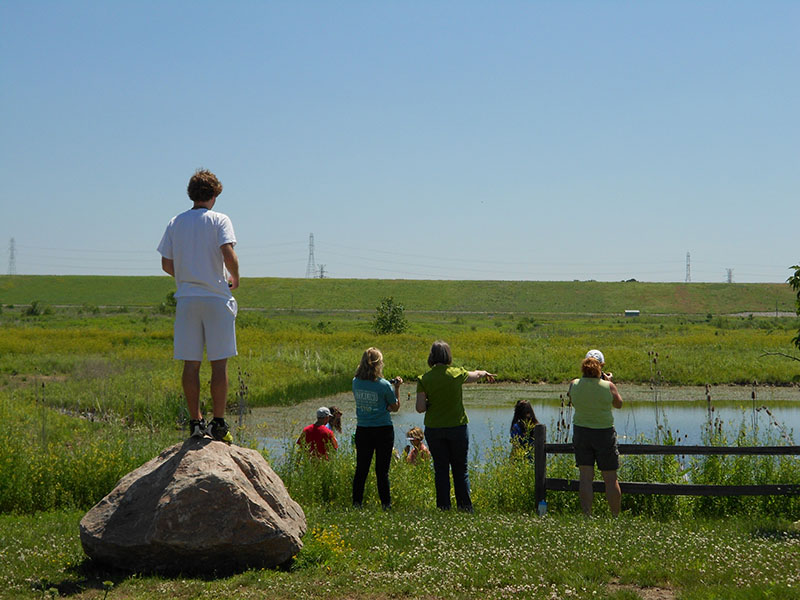
Students transform nature into art and grow through collaboration

The Transforming Nature fellowship explores Fernald Preserve.
written by Alicia Auhagen, university marketing intern
Gathered in the third floor conference room of Pearson Hall in May, four artists, three scientists and a handful of Miami faculty began the 2014 summer session united in a common purpose: communicate issues of environmental science in unconventional, engaging ways.
This fellowship, Transforming Nature, combined undergraduate and graduate students into three project groups focused on different environmental science topics including the watershed, crop diversity and pesticide use.
Transforming Nature’s interdisciplinary approach prompted student- and faculty-led workshops throughout the program, designed to share a taste of each participant’s skills with the group. Biologists became photographers. Writers became frog-catchers. Geologists became printmakers.
“I have always believed that the more you know how to do, the more you can do,” said program coordinator and associate professor of biology Michelle Boone. “So learning from each other is something that makes sense.”
The group traveled to Hueston Woods, Fernald Nature Preserve and several farms to explore how local environments have changed over time as the result of land use practices. After learning how others interact with the environment, each of the three Transforming Nature project teams worked on their own creative projects, ranging from a printmaking collection, a live poetry performance and chapbook and a film.
For Boone, Transforming Nature was an opportunity to get people from a variety of disciplines excited about science — even if conducting experiments was not the path they wished to follow. For the participating artists and scientists, the program served as an exploration of the other’s field and way of thinking.
Graduate biology student Tyler Hoskins had never worked with artists before the program.
“I came in with virtually no idea of how artistic projects progress. I think I failed to appreciate the degree of contemplation behind artistic projects, assuming inspiration just magically pops into an artist’s head. They really spend a lot of time thinking deeply about the issue at hand, how it affects society and what the message of the art will be,” he said.
Junior interior design student Lila Wengler was surprised by the similarities she noticed between the methodologies of designers and scientists.
“In some ways, designing a building is a lot like designing an experiment. A balance of the creative and the rational is necessary in both fields. Seeing these parallels helped me realize the great potential of collaboration between scientists and designers.”
Boone sees the sciences’ potential to bring artists to inspiring experiences they might not find on their own.
“Have you ever seen thousands of salamanders migrating to a pond on a rainy spring night? Have you ever stared into a microscope to look at the testes of a frog? It’s a marvelous world through the looking glass, and we can take you there,” she said.
